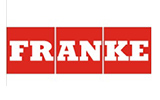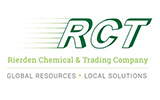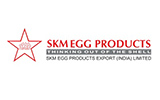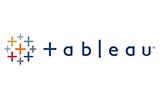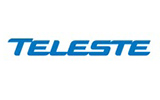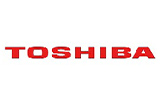CHAPTER 1:INTRODUCTION
1.1.REPORT DESCRIPTION
1.2.KEY MARKET SEGMENTS
1.3.RESEARCH METHODOLOGY
1.3.1.Primary research
1.3.2.Secondary research
1.3.3.Analyst tools & models
CHAPTER 2:EXECUTIVE SUMMARY
2.1.CXO PERSPECTIVE
CHAPTER 3:MARKET LANDSCAPE
3.1.MARKET DEFINITION AND SCOPE
3.2.KEY FINDINGS
3.2.1.Top investment pockets
3.2.2.Top impacting factors
3.3.PORTER'S FIVE FORCES ANALYSIS
3.4.KEY PLAYER POSITIONING
3.5.MARKET DYNAMICS
3.5.1.Drivers
3.5.1.1.The need to improve uptime of equipment and maintenance cost reduction
3.5.1.2.Increase in investment on predictive maintenance
3.5.1.1.Rise in need to extend lifetime of aging assets
3.5.2.Restraints
3.5.2.1.Lack of skilled staff
3.5.2.2.Difficult to implement
3.5.2.3.Data privacy and security concerns
3.5.3.Opportunity
3.5.3.1.Integration of predictive maintenance with IIoT and use of machine learning
3.5.3.2.Real-time condition monitoring to assist in taking prompt actions
3.5.3.3.Growth in need for remote monitoring and asset management post pandemic
3.6.VALUE CHAIN ANALYSIS
3.7.ROBOTICS ADOPTION IN MANUFACTURING
3.8.AI IMPLEMENTATION ANALYSIS ACROSS INDUSTRY VERTICALS
3.9.QUALITATIVE INSIGHTS (DETECTION AND DIAGNOSIS)
3.9.1.Case Studies
3.9.1.1.Muller industries adopted Augury's Auguscope device for predictive maintenance
3.9.1.2.Euromicron subsidiary Telent gained IoT master agreement from Deutsche Bahn
3.9.1.3.VAALCO to adopt PIMS from INTECSEA for subsea repair campaign
3.9.1.4.Israel Electric Corporation adopted Schneider Electric enables predictive maintenance to enhance reliability
3.10.MODELS AND APPROACHES
3.10.1.Statistical Pattern Classification:
3.10.1.1.Bayesian Network
3.10.1.2.Neural networks
3.10.1.3.Linear Classification
3.10.1.4.Hybrid Models
3.10.2.Pattern Classification: Phases and Components
3.10.2.1.Training Phase
3.10.2.2.Testing Phase
3.10.3.Sub problems Pattern Classification
3.10.3.1.Feature Extraction
3.10.3.2.Over fitting
3.10.3.3.Model Selection
3.10.3.4.Prior Knowledge
3.10.3.5.Missing Features
3.10.3.6.Mereology
3.10.3.7.Segmentation
3.10.3.8.Context
3.10.3.9.Invariance's Evidence
3.10.3.10.Pooling Costs and Risks
3.10.3.11.Computational Complexity
3.11.COVID-19 IMPACT ANALYSIS ON PREDICTIVE MAINTENANCE MARKET
3.11.1.Impact on market size
3.11.2.Consumer trends, preferences, and budget impact
3.11.3.Regulatory framework
3.11.4.Economic impact
3.11.5.Key player strategies to tackle negative impact
3.11.6.Opportunity window (due to COVID outbreak)
CHAPTER 4:PREDICTIVE MAINTENANCE MARKET, BY COMPONENT
4.1.OVERVIEW
4.2.SOLUTION
4.2.1.Key market trends, growth factors, and opportunities
4.2.2.Market size and forecast, by region
4.2.3.Market analysis, by country
4.3.SERVICE
4.3.1.Key market trends, growth factors, and opportunities
4.3.2.Market size and forecast, by region
4.3.3.Market analysis, by country
4.3.4.Professional Service
4.3.4.1.Market size and forecast
4.3.4.2.Support and Maintenance
4.3.4.3.Deployment and Integration
4.3.4.4.Training and Education
4.3.5.Managed Service
CHAPTER 5:PREDICTIVE MAINTENANCE MARKET, BY TECHNIQUE
5.1.OVERVIEW
5.2.VIBRATION MONITORING
5.2.1.Key market trends, growth factors, and opportunities
5.2.2.Market size and forecast, by region
5.2.3.Market analysis, by country
5.3.ELECTRICAL TESTING
5.3.1.Key market trends, growth factors, and opportunities
5.3.2.Market size and forecast, by region
5.3.3.Market analysis, by country
5.4.OIL ANALYSIS
5.4.1.Key market trends, growth factors, and opportunities
5.4.2.Market size and forecast, by region
5.4.3.Market analysis, by country
5.5.ULTRASONIC LEAK DETECTORS
5.5.1.Key market trends, growth factors, and opportunities
5.5.2.Market size and forecast, by region
5.5.3.Market analysis, by country
5.6.SHOCK PULSE
5.6.1.Key market trends, growth factors, and opportunities
5.6.2.Market size and forecast, by region
5.6.3.Market analysis, by country
5.7.INFRARED
5.7.1.Key market trends, growth factors, and opportunities
5.7.2.Market size and forecast, by region
5.7.3.Market analysis, by country
5.8.OTHERS
5.8.1.Key market trends, growth factors, and opportunities
5.8.2.Market size and forecast, by region
5.8.3.Market analysis, by country
CHAPTER 6:PREDICTIVE MAINTENANCE MARKET, BY DEPLOYMENT TYPE
6.1.OVERVIEW
6.2.CLOUD
6.2.1.Key market trends, growth factors, and opportunities
6.2.2.Market size and forecast, by region
6.2.3.Market analysis, by country
6.3.ON-PREMISE
6.3.1.Key market trends, growth factors, and opportunities
6.3.2.Market size and forecast, by region
6.3.3.Market analysis, by country
CHAPTER 7:PREDICTIVE MAINTENANCE MARKET, BY STAKEHOLDER
7.1.OVERVIEW
7.2.MRO
7.2.1.Key market trends, growth factors, and opportunities
7.2.2.Market size and forecast, by region
7.2.3.Market analysis, by country
7.3.OEM/ODM
7.3.1.Key market trends, growth factors, and opportunities
7.3.2.Market size and forecast, by region
7.3.3.Market analysis, by country
7.4.TECHNOLOGY INTEGRATORS
7.4.1.Key market trends, growth factors, and opportunities
7.4.2.Market size and forecast, by region
7.4.3.Market analysis, by country
7.4.4.Pure play
7.4.5.End-to-end
CHAPTER 8:PREDICTIVE MAINTENANCE MARKET, BY INDUSTRY VERTICAL
8.1.OVERVIEW
8.2.MANUFACTURING
8.2.1.Key market trends, growth factors, and opportunities
8.2.2.Market size and forecast, by region
8.2.3.Market analysis, by country
8.3.ENERGY & UTILITIES
8.3.1.Key market trends, growth factors, and opportunities
8.3.2.Market size and forecast, by region
8.3.3.Market analysis, by country
8.4.AEROSPACE & DEFENSE
8.4.1.Key market trends, growth factors, and opportunities
8.4.2.Market size and forecast, by region
8.4.3.Market analysis, by country
8.5.TRANSPORTATION & LOGISTICS
8.5.1.Key market trends, growth factors, and opportunities
8.5.2.Market size and forecast, by region
8.5.3.Market analysis, by country
8.6.GOVERNMENT
8.6.1.Key market trends, growth factors, and opportunities
8.6.2.Market size and forecast, by region
8.6.3.Market analysis, by country
8.7.HEALTHCARE
8.7.1.Key market trends, growth factors, and opportunities
8.7.2.Market size and forecast, by region
8.7.3.Market analysis, by country
8.8.OTHERS
8.8.1.Key market trends, growth factors, and opportunities
8.8.2.Market size and forecast, by region
8.8.3.Market analysis, by country
CHAPTER 9:PREDICTIVE MAINTENANCE MARKET, BY REGION
9.1.OVERVIEW
9.2.NORTH AMERICA
9.2.1.Key market trends, growth factors, and opportunities
9.2.2.Market size and forecast, by component
9.2.3.Market size and forecast, by technique
9.2.4.Market size and forecast, by deployment type
9.2.5.Market size and forecast, by stakeholders
9.2.6.Market size and forecast, by industry vertical
9.2.7.Market analysis, by country
9.2.7.1.U.S.
9.2.7.1.1.Market size and forecast, by component
9.2.7.1.2.Market size and forecast, by technique
9.2.7.1.3.Market size and forecast, by deployment type
9.2.7.1.4.Market size and forecast, by stakeholders
9.2.7.1.5.Market size and forecast, by industry vertical
9.2.7.2.Canada
9.2.7.2.1.Market size and forecast, by component
9.2.7.2.2.Market size and forecast, by technique
9.2.7.2.3.Market size and forecast, by deployment type
9.2.7.2.4.Market size and forecast, by stakeholders
9.2.7.2.5.Market size and forecast, by industry vertical
9.3.EUROPE
9.3.1.Key market trends, growth factors, and opportunities
9.3.2.Market size and forecast, by component
9.3.3.Market size and forecast, by technique
9.3.4.Market size and forecast, by deployment type
9.3.5.Market size and forecast, by stakeholders
9.3.6.Market size and forecast, by industry vertical
9.3.7.Market analysis, by country
9.3.7.1.Germany
9.3.7.1.1.Market size and forecast, by component
9.3.7.1.2.Market size and forecast, by technique
9.3.7.1.3.Market size and forecast, by deployment type
9.3.7.1.4.Market size and forecast, by stakeholders
9.3.7.1.5.Market size and forecast, by industry vertical
9.3.7.2.France
9.3.7.2.1.Market size and forecast, by component
9.3.7.2.2.Market size and forecast, by technique
9.3.7.2.3.Market size and forecast, by deployment type
9.3.7.2.4.Market size and forecast, by stakeholders
9.3.7.2.5.Market size and forecast, by industry vertical
9.3.7.3.UK
9.3.7.3.1.Market size and forecast, by component
9.3.7.3.2.Market size and forecast, by technique
9.3.7.3.3.Market size and forecast, by deployment type
9.3.7.3.4.Market size and forecast, by stakeholders
9.3.7.3.5.Market size and forecast, by industry vertical
9.3.7.4.Italy
9.3.7.4.1.Market size and forecast, by component
9.3.7.4.2.Market size and forecast, by technique
9.3.7.4.3.Market size and forecast, by deployment type
9.3.7.4.4.Market size and forecast, by stakeholders
9.3.7.4.5.Market size and forecast, by industry vertical
9.3.7.5.Rest of Europe
9.3.7.5.1.Market size and forecast, by component
9.3.7.5.2.Market size and forecast, by technique
9.3.7.5.3.Market size and forecast, by deployment type
9.3.7.5.4.Market size and forecast, by stakeholders
9.3.7.5.5.Market size and forecast, by industry vertical
9.4.ASIA-PACIFIC
9.4.1.Key market trends, growth factors, and opportunities
9.4.2.Market size and forecast, by component
9.4.3.Market size and forecast, by technique
9.4.4.Market size and forecast, by deployment type
9.4.5.Market size and forecast, by stakeholders
9.4.6.Market size and forecast, by industry vertical
9.4.7.Market analysis, by country
9.4.7.1.Japan
9.4.7.1.1.Market size and forecast, by component
9.4.7.1.2.Market size and forecast, by technique
9.4.7.1.3.Market size and forecast, by deployment type
9.4.7.1.4.Market size and forecast, by stakeholders
9.4.7.1.5.Market size and forecast, by industry vertical
9.4.7.2.China
9.4.7.2.1.Market size and forecast, by component
9.4.7.2.2.Market size and forecast, by technique
9.4.7.2.3.Market size and forecast, by deployment type
9.4.7.2.4.Market size and forecast, by stakeholders
9.4.7.2.5.Market size and forecast, by industry vertical
9.4.7.3.India
9.4.7.3.1.Market size and forecast, by component
9.4.7.3.2.Market size and forecast, by technique
9.4.7.3.3.India size and forecast, by deployment type
9.4.7.3.4.Market size and forecast, by stakeholders
9.4.7.3.5.Market size and forecast, by industry vertical
9.4.7.4.South Korea
9.4.7.4.1.Market size and forecast, by component
9.4.7.4.2.Market size and forecast, by technique
9.4.7.4.3.Market size and forecast, by deployment type
9.4.7.4.4.Market size and forecast, by stakeholders
9.4.7.4.5.Market size and forecast, by industry vertical
9.4.7.5.Rest of Asia-Pacific
9.4.7.5.1.Market size and forecast, by component
9.4.7.5.2.Market size and forecast, by technique
9.4.7.5.3.Market size and forecast, by deployment type
9.4.7.5.4.Market size and forecast, by stakeholders
9.4.7.5.5.Market size and forecast, by industry vertical
9.5.LAMEA
9.5.1.Key market trends, growth factors, and opportunities
9.5.2.Market size and forecast, by component
9.5.3.Market size and forecast, by technique
9.5.4.Market size and forecast, by deployment type
9.5.5.Market size and forecast, by stakeholders
9.5.6.Market size and forecast, by industry vertical
9.5.7.Market analysis, by country
9.5.7.1.Latin America
9.5.7.1.1.Market size and forecast, by component
9.5.7.1.2.Market size and forecast, by technique
9.5.7.1.3.Market size and forecast, by deployment type
9.5.7.1.4.Market size and forecast, by stakeholders
9.5.7.1.5.Market size and forecast, by industry vertical
9.5.7.2.Middle East
9.5.7.2.1.Market size and forecast, by component
9.5.7.2.2.Market size and forecast, by technique
9.5.7.2.3.Market size and forecast, by deployment type
9.5.7.2.4.Market size and forecast, by stakeholders
9.5.7.2.5.Market size and forecast, by industry vertical
9.5.7.3.Africa
9.5.7.3.1.Market size and forecast, by component
9.5.7.3.2.Market size and forecast, by technique
9.5.7.3.3.Market size and forecast, by deployment type
9.5.7.3.4.Market size and forecast, by stakeholders
9.5.7.3.5.Market size and forecast, by industry vertical
CHAPTER 10:COMPETITIVE LANDSCAPE
10.1.COMPETITIVE DASHBOARD
10.2.TOP WINNING STRATEGIES
10.3.KEY DEVELOPMENTS
10.3.1.Product development
10.3.2.Partnership
10.3.3.Product Launch
10.3.4.Acquisition
10.3.5.Agreement
10.3.6.Collaboration
10.3.7.Business Expansion
CHAPTER 11:COMPANY PROFILES
11.1.ASYSTOM
11.1.1.Company overview
11.1.2.Key executives
11.1.3.Company snapshot
11.1.4.Product portfolio
11.1.5.Key strategic moves and developments
11.2.C3.AI, INC.
11.2.1.Company overview
11.2.2.Key executives
11.2.3.Company snapshot
11.2.4.Operating business segments
11.2.5.Product portfolio
11.2.6.Business performance
11.2.7.Key strategic moves and developments
11.3.ENGINEERING CONSULTANTS GROUP, INC.
11.3.1.Company overview
11.3.2.Key executives
11.3.3.Company snapshot
11.3.4.Product portfolio
11.3.5.Key strategic moves and developments
11.4.EXPERT MICROSYSTEMS, INC.
11.4.1.Company overview
11.4.2.Key Executives
11.4.3.Company snapshot
11.4.4.Product portfolio
11.5.FIIX INC.
11.5.1.Company overview
11.5.2.Key executives
11.5.3.Company snapshot
11.5.4.Product portfolio
11.5.5.Key strategic moves and developments
11.6.OPERATIONAL EXCELLENCE (OPEX) GROUP LTD
11.6.1.Company overview
11.6.2.Key Executives
11.6.3.Company snapshot
11.6.4.Product portfolio
11.6.5.Key strategic moves and developments
11.7.SIGMA INDUSTRIAL PRECISION
11.7.1.Company overview
11.7.2.Key Executives
11.7.3.Company snapshot
11.7.4.Product portfolio
11.8.SPARKCOGNITION
11.8.1.Company overview
11.8.2.Key Executives
11.8.3.Company snapshot
11.8.4.Product portfolio
11.8.5.Key strategic moves and developments
11.9.TIBCO SOFTWARE INC
11.9.1.Company overview
11.9.2.Key Executives
11.9.3.Company snapshot
11.9.4.Product portfolio
11.9.5.Key strategic moves and developments
11.10.UPTAKE TECHNOLOGIES INC.
11.10.1.Company overview
11.10.2.Key Executives
11.10.3.Company snapshot
11.10.4.Product portfolio
11.10.5.Key strategic moves and developments
11.11.GENERAL ELECTRIC
11.11.1.Company overview
11.11.2.Key executives
11.11.3.Company snapshot
11.11.4.Operating business segments
11.11.5.Product portfolio
11.11.6.R&D expenditure
11.11.7.Business performance
11.11.8.Key strategic moves and developments
11.12.HITACHI, LTD.
11.12.1.Company overview
11.12.2.Key executives
11.12.3.Company snapshot
11.12.4.Operating business segments
11.12.5.Product portfolio
11.12.6.R&D Expenditure
11.12.7.Business performance
11.12.8.Key strategic moves and developments
11.13.INTERNATIONAL BUSINESS MACHINES CORPORATION
11.13.1.Company overview
11.13.2.Key Executives
11.13.3.Company snapshot
11.13.4.Operating business segments
11.13.5.Product portfolio
11.13.6.R&D Expenditure
11.13.7.Business performance
11.13.8.Key strategic moves and developments
11.14.MICROSOFT CORPORATION
11.14.1.Company overview
11.14.2.Key executives
11.14.3.Company snapshot
11.14.4.Operating business segments
11.14.5.Product portfolio
11.14.6.R&D Expenditure
11.14.7.Business performance
11.14.8.Key strategic moves and developments
11.15.PTC INC.
11.15.1.Company overview
11.15.2.Key Executives
11.15.3.Company snapshot
11.15.4.Operating business segments
11.15.5.Product portfolio
11.15.6.R&D Expenditure
11.15.7.Business performance
11.15.8.Key strategic moves and developments
11.16.SAP
11.16.1.Company overview
11.16.2.Key Executives
11.16.3.Company snapshot
11.16.4.Operating business segments
11.16.5.Product portfolio
11.16.6.R&D Expenditure
11.16.7.Business performance
11.16.8.Key strategic moves and developments
11.17.SAS INSTITUTE INC.
11.17.1.Company overview
11.17.2.Key Executives
11.17.3.Company snapshot
11.17.4.Product portfolio
11.17.5.Key strategic moves and developments
11.18.SCHNEIDER ELECTRIC SE
11.18.1.Company overview
11.18.2.Key executives
11.18.3.Company snapshot
11.18.4.Operating business segments
11.18.5.Product portfolio
11.18.6.R&D Expenditure
11.18.7.Business performance
11.18.8.Key strategic moves and developments
11.19.SOFTWARE AG
11.19.1.Company overview
11.19.2.Key Executives
11.19.3.Company snapshot
11.19.4.Operating business segments
11.19.5.Product portfolio
11.19.6.R&D Expenditure
11.19.7.Business performance
11.19.8.Key strategic moves and developments
11.20.RELIABILITY SOLUTIONS SP. Z O.O.
11.20.1.Company overview
11.20.2.Key Executives
11.20.3.Company snapshot
11.20.4.Product portfolio
11.20.5.Key strategic moves and developments






